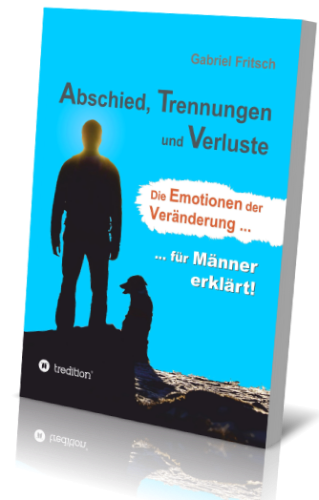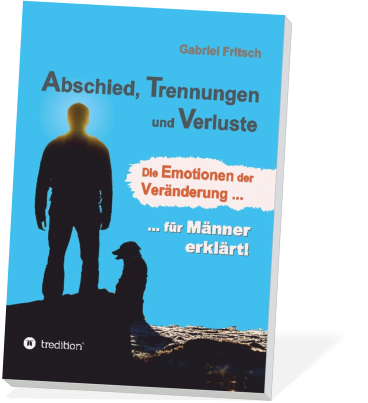Successful
cooperation
is
both
a
path
and
a
goal.
Good
methods
and
tools
make
it
much
easier
for
a
team
to
organize
itself.
Encourage
your
team
to
take
the
first
steps
in
this
direction
and
experience
the difference.

How to turn your team
into the boss


- The 6 Hurdles
- The Elements
- What are the Elements
- Culture Stage Model
- Gut, Head or Herart Process
- Culture Change
- List of Feelings and Needs
- Emergency Emo-Step
- Four Step Circle
- NVC Magic Circle
- Utopia Magic Circle
- Utopia and Vision
- No-Goes and Must-Haves
- Pain Points
- Consensus
- Requirement Lists
- NVC-plus Strategy
- NVC-plus Matrix
- Discourse
- Card Set
- Download-Tool-Depot
- FAQs
- Events
- Media

Hurdle 2: Integrating sensitivity and emotions
6 Hurdles to Self-Organization
Chapter 06 - Intuition and Emotions

Home / hurdle 2: feelings /
Life
manifests
itself
in
two
primary
principles:
In
movement
and
experience.
That
is
why
emotions
are
a
central
element
of
life,
because
on
the
one
hand
they
are
the
motor
that
sets
us
in
motion
and
on
the
other
hand
they
are
the
opportunity
to
experience
what
comes
our
way
in
the
meaning
that
it
has
for
us
personally.
Emotions
are
both
a
blessing
and
a
danger.
If
the
engine
is
strong,
it
needs
a
suitable
chassis
and
good
steering,
otherwise
the
vehicle
will
destroy
itself.
Either
it
breaks
apart
or
it
crashes.
Furthermore,
we
must
not confuse subjective meaning with objective meaning.
We
can
a)
become
aware
of
every
emotion,
b)
be
associated
with
the
corresponding
need,
c)
be
provided
with
a
suitable
strategy.
This
can
lead
to
the
change
that
was
unconsciously
inherent
in
the
emotion.
Here
is
an
example:
Klaus
is
annoyed
by
a
comment
made
by
his
coworker.
He
pauses
and
becomes
aware
of
his
anger
instead
of
acting
it
out
or
projecting
it
onto
the
employee.
He
considers
that
the
associated
need
is
mindfulness
and
goodwill
(see
list
of
feelings
and
needs).
What
strategy
would
lead
to
more
mindfulness
and
goodwill
in
this
case?
He
asks
his
colleague
if
he
can
rephrase
this,
because
he
would
be
happy
with
a
more
benevolent formulation.
However,
being
aware
of
your
own
feelings
does
not
mean
that
you
have
good
intuition.
Feelings
connect
people
with
their
inner
vitality,
while
intuition
connects
them
sensitively
with
the
outside
world, e.g. with a team, a project, a work process or the meaning of a meeting.
Moods,
on
the
other
hand,
are
feelings
that
have
sunk
into
people
and
then
color
them
emotionally.
This
is
not
always
useful
or
pleasant.
Freedom
means
being
aware
of
these
feelings
and
being
able
to
change
them.
In
addition,
we
should
not
import
too
many
feelings
from
other
contexts
(family,
leisure
time)
into
team
projects,
especially
if
they
are
unpleasant.
Otherwise,
we
quickly
live
out
our
tension
where
the
associated
problems
are
not
and
therefore
cannot
be
solved.
The
essence
of
feelings
is
vitality,
i.e.
the
stimulation
of
the
inner
person
in
coordination
with
the
moving
outer
world.
Sometimes,
however,
feelings
that
are
alive
in
themselves
remain
static
and
stable
within
us.
Instead
of
inner
stirrings,
we
move
on
the
outside
with
emotional
tension,
thinking
or
running
in
an
emotional
hamster
wheel.
Despite
all
our
efforts,
we
and
the
hamster
wheel
remain
in
the
same
place.
Here
we
need
to
turn
the
tables
again
and
act
in
harmony
with
our
emotions
rather
than
in
reaction
to
them.
However,
this
is
a
matter
of
training.
Here
are
the
four elements that can help:
Take
a
look
at
these
four
elements
and
discuss
them
with
your
team.
If
you
are
interested
in
this
topic,
sign
up
for
the
newsletter
and
find
out
more
about
NVC-plus
and
the
organic
self-
organization of teams and companies.
1.
Do you understand the logic of emotions?
2.
What distinguishes feeling from sensing?
3.
How do you change an unpleasant emotion?
4.
What are the best methods and tools?

1. Article about emotions in business
1.
1. Article about emotions in business
Article about emotions in business
1. Article about emotions in business
2. Feelings and needs list
2.
2. Feelings and needs list
2. Feelings and needs list
Feelings and needs list
2. Feelings and needs list
3. NVC Magic Circle
4. Emergency Emo-Step®
4
4. Emergency Emo-Step®
.
4. Emergency Emo-Step®
Emergency Emo-Step
4. Emergency Emo-Step®
®
4. Emergency Emo-Step®



Every team, start-up, or company must overcome these six hurdles if it wants to organize itself
collegially in order to successfully manage projects from within the community.


Sensitivity and Emotions






1.
Do you understand the logic of emotions?
2.
What distinguishes feeling from sensing?
3.
How do you change an unpleasant emotion?
4.
What are the best methods and tools?
Chapter 06 - Intuition and Emotions


- The 6 Hurdles
- The Elements
- What are the Elements
- Culture Stage Model
- Gut, Head or Herart Process
- Culture Change
- List of Feelings and Needs
- Requirement Lists
- NVC Magic Circle
- Utopia Magic Circle
- Emergency Emo-Step
- Four Step Circle
- Utopia and Vision
- No-Goes and Must-Haves
- Pain Points
- Consensus
- NVC-plus Strategy
- NVC-plus Matrix
- Discourse
- Card Set
- Download-Tool-Depot
- FAQs
- Events
- Media
Successful
cooperation
is
both
a
path
and
a
goal.
Good
methods
and
tools
make
it
much
easier
for
a
team
to
organize
itself.
Encourage
your
team
to
take
the
first
steps
in
this
direction
and
experience
the
difference.
Life
manifests
itself
in
two
primary
principles:
In
movement
and
experience.
That
is
why
emotions
are
a
central
element
of
life,
because
on
the
one
hand
they
are
the
motor
that
sets
us
in
motion
and
on
the
other
hand
they
are
the
opportunity
to
experience
what
comes
our
way
in
the
meaning
that
it
has
for
us
personally.
Emotions
are
both
a
blessing
and
a
danger.
If
the
engine
is
strong,
it
needs
a
suitable
chassis
and
good
steering,
otherwise
the
vehicle
will
destroy
itself.
Either
it
breaks
apart
or
it
crashes.
Furthermore,
we
must
not
confuse
subjective
meaning
with
objective
meaning.
We
can
a)
become
aware
of
every
emotion,
b)
be
associated
with
the
corresponding
need,
c)
be
provided
with
a
suitable
strategy.
This
can
lead
to
the
change
that
was
unconsciously
inherent
in
the
emotion.
Here
is
an
example:
Klaus
is
annoyed
by
a
comment
made
by
his
coworker.
He
pauses
and
becomes
aware
of
his
anger
instead
of
acting
it
out
or
projecting
it
onto
the
employee.
He
considers
that
the
associated
need
is
mindfulness
and
goodwill
(see
list
of
feelings
and
needs).
What
strategy
would
lead
to
more
mindfulness
and
goodwill
in
this
case?
He
asks
his
colleague
if
he
can
rephrase
this,
because
he
would
be
happy
with
a
more
benevolent formulation.
However,
being
aware
of
your
own
feelings
does
not
mean
that
you
have
good
intuition.
Feelings
connect
people
with
their
inner
vitality,
while
intuition
connects
them
sensitively
with
the
outside
world,
e.g.
with
a
team,
a
project,
a
work
process or the meaning of a meeting.
Moods,
on
the
other
hand,
are
feelings
that
have
sunk
into
people
and
then
color
them
emotionally.
This
is
not
always
useful
or
pleasant.
Freedom
means
being
aware
of
these
feelings
and
being
able
to
change
them.
In
addition,
we
should
not
import
too
many
feelings
from
other
contexts
(family,
leisure
time)
into
team
projects,
especially
if
they
are
unpleasant.
Otherwise,
we
quickly
live
out
our
tension
where
the
associated
problems are not and therefore cannot be solved.
The
essence
of
feelings
is
vitality,
i.e.
the
stimulation
of
the
inner
person
in
coordination
with
the
moving
outer
world.
Sometimes,
however,
feelings
that
are
alive
in
themselves
remain
static
and
stable
within
us.
Instead
of
inner
stirrings,
we
move
on
the
outside
with
emotional
tension,
thinking
or
running
in
an
emotional
hamster
wheel.
Despite
all
our
efforts,
we
and
the
hamster
wheel
remain
in
the
same
place.
Here
we
need
to
turn
the
tables
again
and
act
in
harmony
with
our
emotions
rather
than
in
reaction
to
them.
However,
this
is
a
matter
of
training. Here are the four elements that can help:
Take
a
look
at
these
four
elements
and
discuss
them
with
your
team.
If
you
are
interested
in
this
topic,
sign
up
for
the
newsletter
and
find
out
more
about
NVC-plus
and
the
organic
self-
organization of teams and companies.

1. Article about emotions in business
1.
1. Article about emotions in business
Article about emotions in business
1. Article about emotions in business
2. Feelings and needs list
2.
2. Feelings and needs list
2. Feelings and needs list
Feelings and needs list
2. Feelings and needs list
3. NVC Magic Circle
4. Emergency Emo-Step®
4
4. Emergency Emo-Step®
.
4. Emergency Emo-Step®
Emergency Emo-Step
4. Emergency Emo-Step®
®
4. Emergency Emo-Step®









































